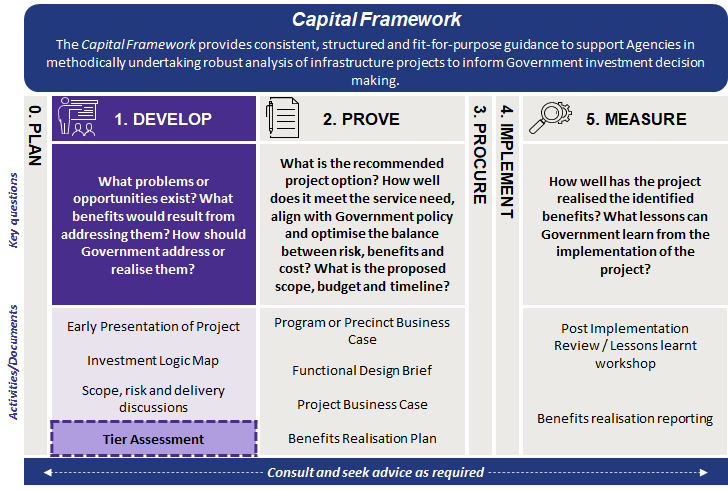The Capital Framework allocates projects into one of three Tiers, depending on their capital value and level of risk. The Tier of a project dictates the level of analysis the Project Team is required to undertake to progress an investment through the Capital Framework process. This means that the Project Team is required to identify at an early stage the appropriate Tier for an investment for which it is seeking Government funding. Hence, the Project Team must undertake a Tier assessment and identification as part of Stage 1 – Develop of the Capital Framework, as shown in the diagram below.
The Project Team should present the indicative Tier assessment and rationale in the Early Presentation of Project (EPP) for discussion with MPC, FABG and ICA. The Project Team should finalise the Tier assessment prior to the completion of Stage 1 – Develop, revising the allocation after the Investment Logic Map (ILM) is produced, where relevant. For more information, refer to the EPP Guidelines.
Tier Assessment in the Capital Framework process

Purpose of this section
The purpose of this section is to provide direction to the Project Sponsor, Project Director and Project Team on how to identify the Tier of a proposed investment and to indicate the level of analysis required under each Tier.
Objectives of the Tier assessment
The objective of the Tier assessment is to ensure that the project development pathway and analysis is appropriate and proportionate to the risk and capital cost of the project. The Tier assessment ensures that the analysis is robust, but resources are not expended unnecessarily.
Footnotes:
